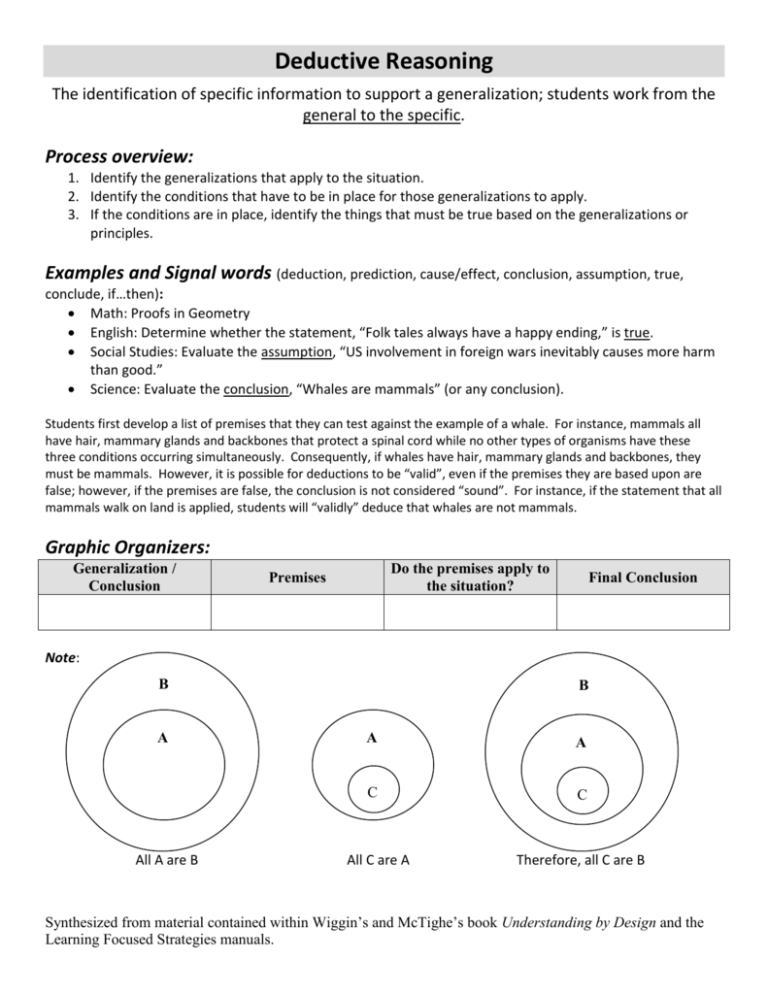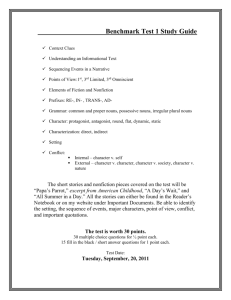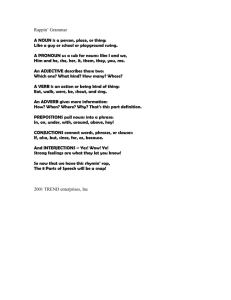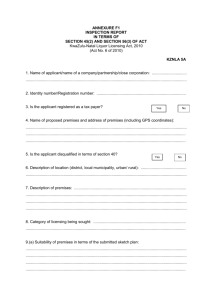Deductive reasoning
advertisement

Deductive Reasoning The identification of specific information to support a generalization; students work from the general to the specific. Process overview: 1. Identify the generalizations that apply to the situation. 2. Identify the conditions that have to be in place for those generalizations to apply. 3. If the conditions are in place, identify the things that must be true based on the generalizations or principles. Examples and Signal words (deduction, prediction, cause/effect, conclusion, assumption, true, conclude, if…then): Math: Proofs in Geometry English: Determine whether the statement, “Folk tales always have a happy ending,” is true. Social Studies: Evaluate the assumption, “US involvement in foreign wars inevitably causes more harm than good.” Science: Evaluate the conclusion, “Whales are mammals” (or any conclusion). Students first develop a list of premises that they can test against the example of a whale. For instance, mammals all have hair, mammary glands and backbones that protect a spinal cord while no other types of organisms have these three conditions occurring simultaneously. Consequently, if whales have hair, mammary glands and backbones, they must be mammals. However, it is possible for deductions to be “valid”, even if the premises they are based upon are false; however, if the premises are false, the conclusion is not considered “sound”. For instance, if the statement that all mammals walk on land is applied, students will “validly” deduce that whales are not mammals. Graphic Organizers: Generalization / Conclusion Do the premises apply to the situation? Premises Final Conclusion Note: B A All A are B B A A C C All C are A Therefore, all C are B Synthesized from material contained within Wiggin’s and McTighe’s book Understanding by Design and the Learning Focused Strategies manuals. Gender of Spanish Nouns Using Deductive reasoning to test that accuracy of the following conclusion: “It’s always possible to determine the gender of Spanish language nouns based upon their articles and endings.” Generalization / Conclusion Premises Do the premises apply to the situation? Final Conclusion la fruta la madre It’s always possible to determine the gender of Spanish language nouns based upon their articles and endings. Masculine nouns have the article "el" in singular form and the article "los" in plural. Feminine nouns have the article "la" in singular form and the article "las" in plural. la disco el perro el gorila el agua el habla I could differentiate this by asking my stronger students to generate their own conclusion, brainstorm the premises, or the word situations! Nouns Ending in “-a” are feminine Synthesized from material contained within Wiggin’s and McTighe’s book Understanding by Design and the Learning Focused Strategies manuals.








